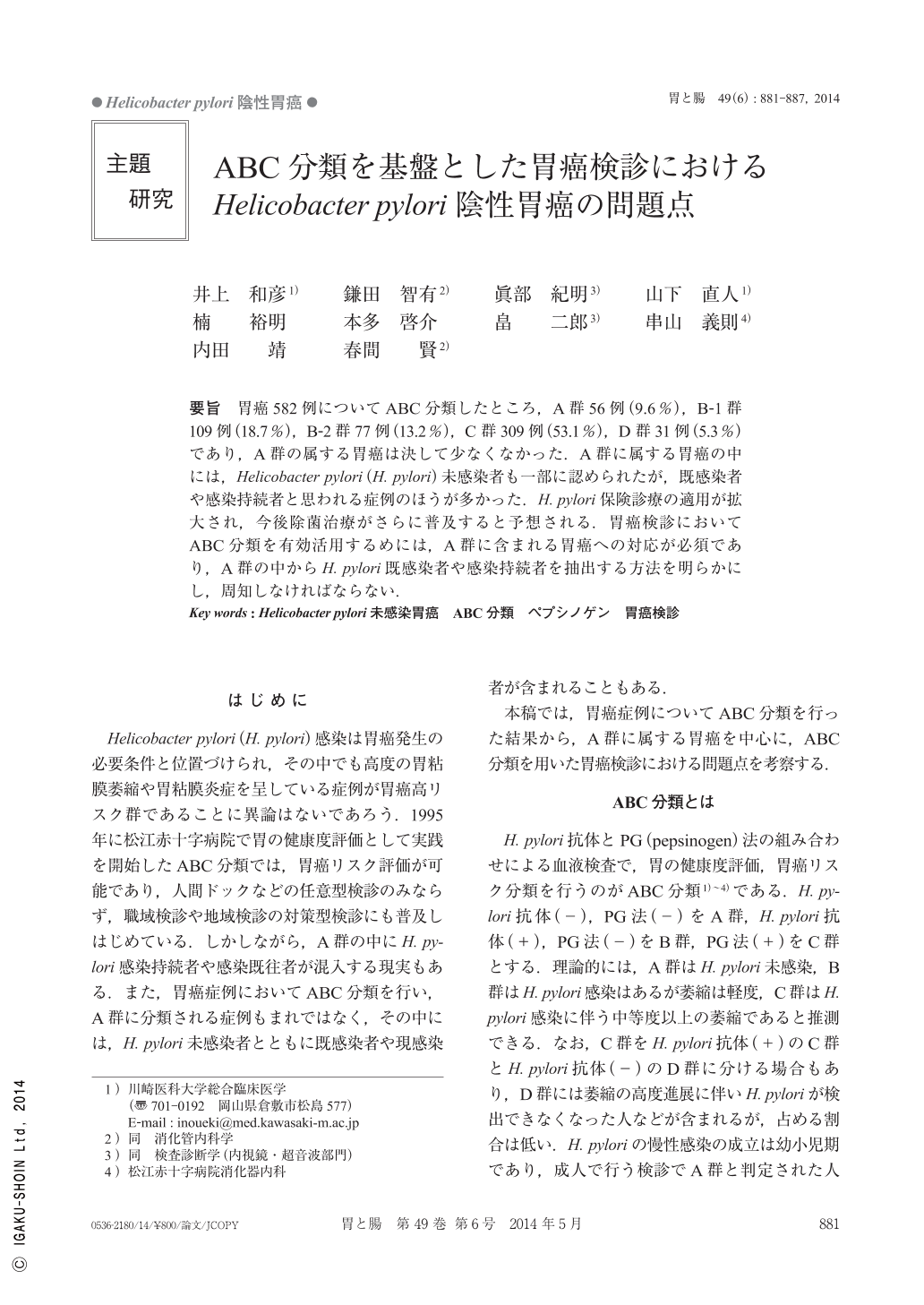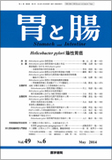Japanese
English
- 有料閲覧
- Abstract 文献概要
- 1ページ目 Look Inside
- 参考文献 Reference
要旨 胃癌582例についてABC分類したところ,A群56例(9.6%),B-1群109例(18.7%),B-2群77例(13.2%),C群309例(53.1%),D群31例(5.3%)であり,A群の属する胃癌は決して少なくなかった.A群に属する胃癌の中には,Helicobacter pylori(H. pylori)未感染者も一部に認められたが,既感染者や感染持続者と思われる症例のほうが多かった.H. pylori保険診療の適用が拡大され,今後除菌治療がさらに普及すると予想される.胃癌検診においてABC分類を有効活用するめには,A群に含まれる胃癌への対応が必須であり,A群の中からH. pylori既感染者や感染持続者を抽出する方法を明らかにし,周知しなければならない.
The risk for gastric cancer can be diagnosed by the ABC classification method, comprising a combination of serum levels of Helicobacter pylori(H. pylori)antibody and PG (pepsinogen) method. Group A, with H. pylori antibody(-)and PG method(-), is considered a super-low risk group. After we classified 582 gastric cancer cases using the ABC classification, 56 cases(9.6%)fell into Group A, 109 cases(18.7%)in Group B-1, 77 cases(13.2%)in Group B-2, 309 cases(53.1%)in Group C, and 31 cases(5.3%)in Group D. A significant number of gastric cancers was classified as Group A. In Group A, more cases were of H. pylori-infected gastric cancers than H. pylori uninfected gastric cancers. Therefore, we must develop a method for separating Group A cases into those with H. pylori infection in the past and those with H. pylori infection at present.

Copyright © 2014, Igaku-Shoin Ltd. All rights reserved.


